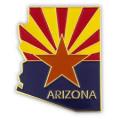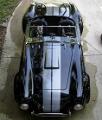I see for carburated engines that wideband o2 sensor kits are available. You place the sensers in the same section of the side pipes as you would an EFI system. They feed the results to a provided gauge. Since they do not feed to a monitored system, you manually adjust the carburetor by changing springs and jets, etc to the desired results thru trial and error .
Has anyone tried these with success.
- Home
- Latest Posts!
- Forums
- Blogs
- Vendors
- Forms
-
Links

- Welcomes and Introductions
- Roadster
- Type 65 Coupe
- 33 Hot Rod
- GTM Supercar
- 818
- Challenge Series
- 289 USRCC
- Coyote R&D
- Ask a Factory Five Tech
- Tech Updates
- General Discussions
- Off Topic Discussions
- Eastern Region
- Central Region
- Mountain Region
- Pacific Region
- Canadian Discussions
- Want to buy
- For Sale
- Pay it forward
-
Gallery

- Wiki-Build-Tech



 Thanks:
Thanks:  Likes:
Likes: 

 Reply With Quote
Reply With Quote



